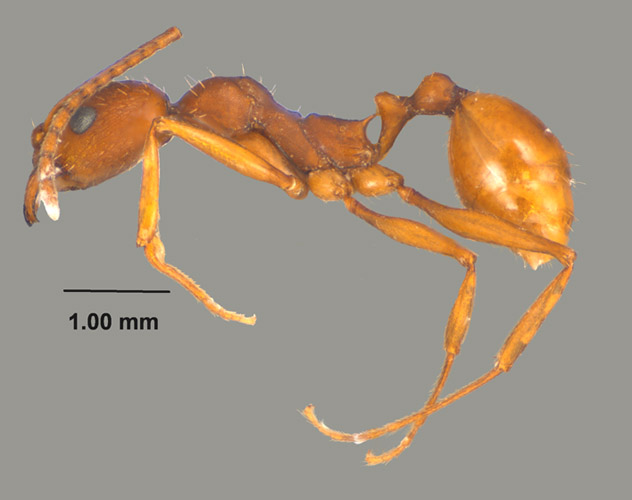Introduction
Ants in the genus Aphaenogaster are medium sized to large, slender with long legs and antennae, usually have propodeal spines (a few species lack spines), have 12 segmented antennae with the last 4 segments forming a weak club. The genus is widespread in North America and species nest in rotting wood, under bark, and in soil.
Identification
Aphaenogaster texana is a yellowish-brown to dark reddish-brown species with an elongate head. Workers of this species are larger than workers of other species in the the A. fulva-rudis-texana group found in this area, and larger workers may be 5.5 mm or more in overall length. It is most similar to A. carolinensis, but can usually be separated by the larger size.
Biology and Economic Importance
Distribution
Aphaenogaster texana was reported by Smith (1928b) as occuring in MS, but this is unlikely as this species is considered to be a western species.
Literature Cited
Links
AntWeb Images
Discover Life Images




